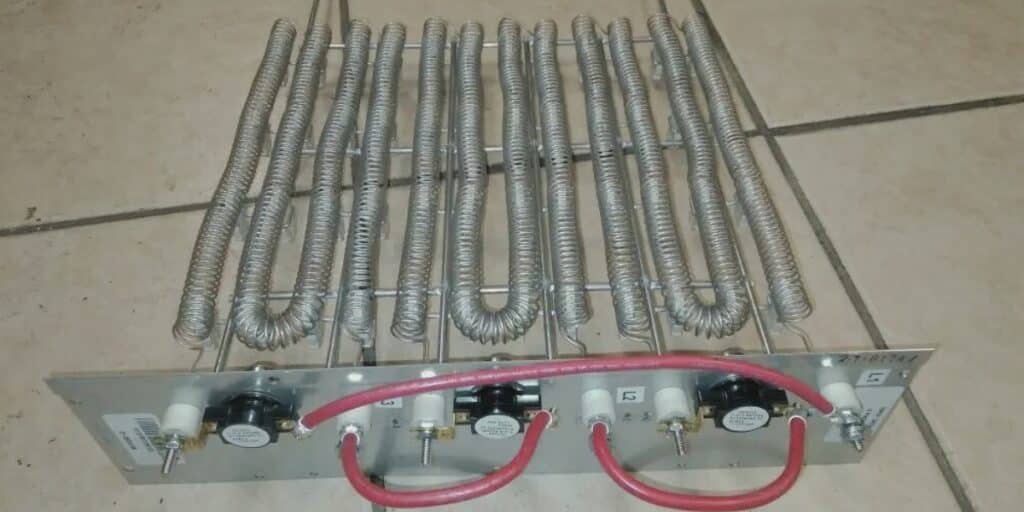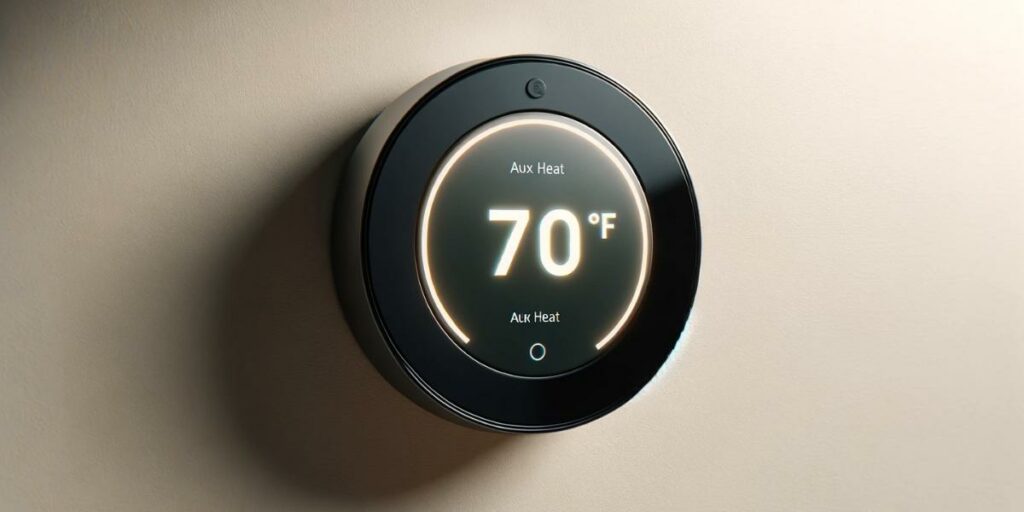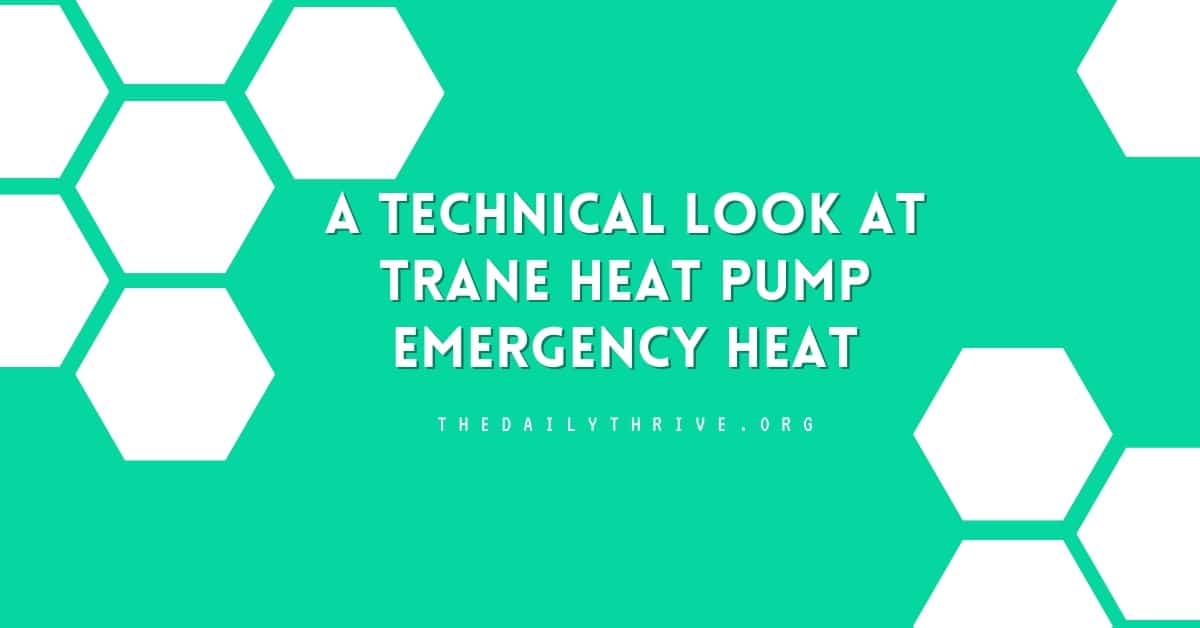In the quest for a comfortable and energy-efficient home, heat pumps have emerged as a modern marvel. Trane, a name synonymous with innovation in heating technology, offers heat pumps that excel in regular operation and provide a crucial backup: the emergency heat mode. This article delves into the intricacies of Trane’s emergency heat, explaining its purpose and offering insights to maximize its benefits.
Emergency Heat Feature on Trane Heat Pump
Heat pumps are praised for their ability to transfer heat from the outside air to warm your home. However, when temperatures plummet, the efficiency of a standard heat pump can decrease. This is where the Trane heat pump’s emergency heat feature becomes invaluable.
Unlike regular operation, which efficiently extracts heat from the outside air, the emergency heat mode activates an auxiliary heating element within the system. This element provides an additional heat source, ensuring your home remains cozy even in the coldest conditions.
The auxiliary electric heating element and sophisticated control systems are central to this emergency system. These components seamlessly work together to detect when external temperatures drop below a certain threshold, typically around 35°F (2°C), and automatically switch to emergency heat.

This integration ensures a continuous and reliable heat supply without manual intervention.
When to Rely on Emergency Heat
The normal heat pump might struggle to keep your home toasty if the outdoor temperature falls below a certain threshold (usually around 15°F for Trane models). That’s when emergency heat steps in, cranking up the heat like a furnace to ensure you stay snug. It’s also helpful during defrost cycles, melting away any icy buildup on the outdoor unit so your heat pump can return to its regular function.
In these scenarios, emergency heat keeps your home warm without interruption.
The primary benefit of emergency heat is its reliability; it acts as a backup to maintain consistent warmth. However, this comes at the cost of higher energy consumption, as the auxiliary heat is less efficient than the heat pump’s standard mode. It’s a trade-off between comfort and efficiency, especially during unusually cold weather.
How do I turn my Trane heat pump to emergency heat?
Different models have varying ways to access emergency heat settings. Some have dedicated buttons, while others might require navigating through menus. Check your Trane manual or do a quick online search for specific instructions.
Remember, if things get too technical, calling a qualified HVAC technician is always the safest bet.
Modern Trane thermostats make managing emergency heat straightforward. With user-friendly interfaces, these thermostats allow you to view and change settings easily, including switching to emergency heat if necessary.
In rare cases, such as system malfunctions, you might need to manually activate the emergency heat. This process, detailed in your specific model’s manual, ensures you can always access this vital feature when needed.
Keeping your Trane heat pump in top condition is key to ensuring the effective operation of both regular and emergency heating modes. Simple steps, such as regularly replacing filters and keeping the outdoor unit free from debris, can significantly impact performance. Additionally, scheduling annual professional check-ups can help identify and rectify potential issues before they escalate.
Troubleshooting Tips for Emergency Heat
Occasionally, you might encounter issues with the emergency heat on the Trane heat pump, such as failure to activate or unusual noises during operation. If your emergency heat isn’t activating, making strange noises, or causing your energy bill to spike, don’t panic!
Here are some basic troubleshooting tips:
- Check your thermostat settings: Make sure emergency heat isn’t accidentally disabled.
- Ensure the outdoor unit is clear: Debris like snow or ice can block airflow and hinder performance.
- Give it a reset: Cycle the power off and on to your Trane system.
If these quick fixes don’t work, remember: a trained HVAC pro is your best friend. Safety should always be your priority, and professional expertise is essential for complex system repairs.
Should You Ever Turn Your Trane Heat Pump to Emergency Heat?
Turning your Trane heat pump to emergency heat is a decision that should be based on specific circumstances. Emergency heat, or “auxiliary heat,” is designed to be used in certain situations.
Here are some instances when it is appropriate to switch to emergency heat:
- Extremely Cold Temperatures: If the outdoor temperature drops below the point where your heat pump can efficiently extract heat from the outside air (usually around 35°F or lower), turning on emergency heat can help maintain a comfortable indoor temperature.
- Heat Pump Malfunction: If your main heat pump system is not working correctly, for example, due to mechanical issues or a malfunction, emergency heat can provide a temporary heating solution until repairs are made.
- During Defrost Cycles: Some systems automatically use emergency heat during defrost cycles to prevent cool air from blowing into the house.
It’s important to note that emergency heat is typically more expensive to operate than the heat pump’s standard heating mode, as it often relies on electric resistance heating, which is less energy-efficient. Therefore, it should be used sparingly and only when necessary.
How Do I Know if My Trane Heat Pump is Using Emergency Heat?

Knowing whether your Trane heat pump is operating in emergency heat mode can be determined in a few ways:
- Thermostat Indicator: Most modern Trane thermostats will have an indicator or a light that turns on when operating in emergency heat mode. It might display a message such as “Emergency Heat,” “Aux Heat,” or similar.
- Increased Energy Usage: If you notice a significant increase in your electric bill during the winter months without a corresponding increase in usage, it could be a sign that your system relies on emergency heat more than it should.
- Physical Inspection: In some cases, you can physically check the heat pump’s outdoor unit. If it’s not running, but you still have heat in the house, the emergency heat is likely active.
- Listening for Different Sounds: Emergency heat often uses different components within the system, which might sound different from your heat pump’s regular operation. If you notice a change in the sound when your heating system is running, this could indicate that emergency heat is being used.
- Checking the Heat Pump’s Status: If your heat pump is iced over or not functioning (fan not spinning), yet your house still receives warm air, the emergency heat likely compensates for the heat pump’s lack of operation.
If you find your system frequently relying on emergency heat, it’s advisable to consult with a heating, ventilation, and air conditioning (HVAC) professional to check for any underlying issues. They can provide a more accurate diagnosis and suggest the best action.
Your Trane heat pump’s emergency heat is vital to ensure your comfort during the harshest winter conditions. By understanding its operation, benefits, and maintenance needs, you can ensure your home remains a haven of warmth and comfort, no matter the weather outside. Regular maintenance and knowledgeable operation are key to maximizing your Trane heat pump’s capabilities.






